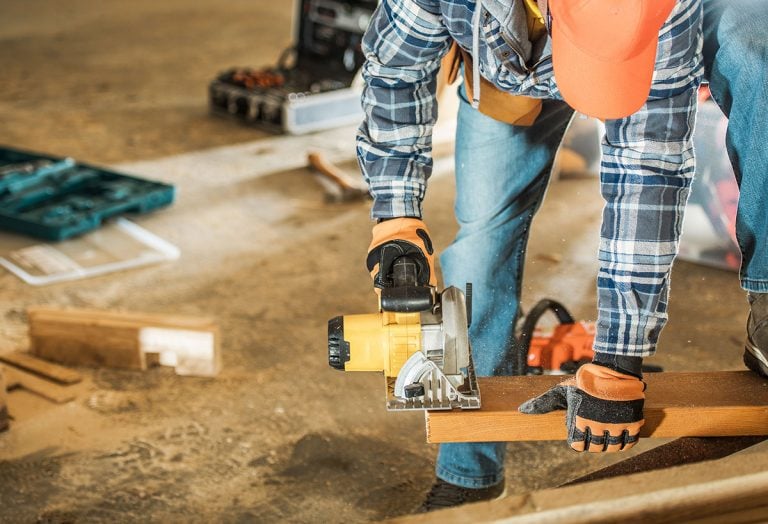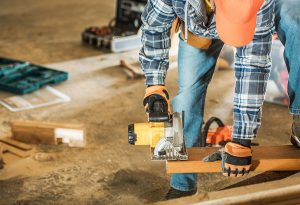The construction industry used to be one of the least automated industries in the world. But after the great recession in the previous years, it started taking advantage of technology to fill in the scarcity of human laborers. But with the rise of robots on site, crews are getting the wrong impression that they are slowly being replaced.
So are they friends or enemies of human laborers?
Actually, we already answered this question in our blog “Automation vs Human Labor.” Reiterating the point we’ve made, human labor in construction is simply indispensable. Design decisions, although with the need for BIM or other 3D modeling software, can be made by humans alone. Even with the presence of machine learning and artificial intelligence, nothing replaces the human brain in making logical decisions. This goes the same in planning, scheduling, monitoring, and budgeting which can all be done in construction project management software like Pro Crew, but the interpretation of the data remains to be the responsibility of a human.
Then what are robots for in construction?
Like we mentioned before, robots have greatly improved productivity and efficiency in any construction project that uses robots. With the physical power it offers, humans are able to do more in a given time and are also able to perform difficult tasks more efficiently. Hence, robots shouldn’t be looked at as threats in construction but as useful tools that will make their lives at the site a lot easier.
Types of Construction Robots and How They Work
Robotics provides a myriad of advantages to the construction industry. Its main goal is to automate processes on-site to speed them up and increase productivity. For many years, construction firms have been aiming for these exact things as productivity affects their profitability. The efforts to find tools that can bring both benefits to the industry eventually gave birth to great automation technologies like the 3D printer. But it’s not just the 3D printer that’s making a huge impact in construction and we are outlining the robotic technologies that are used by most tech-savvy firms today.
- Smart/Intelligent – specialized machines with high-level capabilities to sense their environment. They are also equipped with reasoning capabilities that help them make minor decisions based on the data you input in their system.
- Mechanized – tools that involve machines in their operation. They are considered the oldest types of robotics around the construction.
- Automatic – automated machines that can perform tasks by following well-defined rules without making decisions.
- Semi Automatic – tools that are partly automatic and partly manual.
These different types of automation are being employed in different areas of the construction site. Generally, they are used for:
1.Turning Manual Work to Full Automation
Now, when we say full automation, we don’t intend to cause another misunderstanding among our human laborers. Robots still need human operators for them to work and it’s not like they are going to be installed with AI and ML to make decisions on their own.
Full automation means robots or machines taking over the traditional manual works like welding, cutting, material handling, and so on. In fact, we’re already seeing these kinds of automation on most construction sites through automatic welding machines, cutters, and conveyor systems respectively. These tools have made the work faster and easier, giving human laborers extra time to fulfill other important duties like filling up reports on the construction project management software that they use.
Accuracy, precision, and safety are other benefits enjoyed by using these machines. So apart from the time saved, projects also see significant financial savings by using robotics on the site.
2.Create Lean Construction Practices
The construction industry is producing more and more green buildings. The lean construction movement aims to increase efficiency and productivity while trying to reduce waste. In a traditional construction site, a lot of materials are being wasted because of human error. But with robotics like 3D printers, errors are minimized, making the site more environment-friendly. Furthermore, 3D printers used a mixture of cement and some construction waste in making structures and this recycling gives the owner more savings in a project.
When this machine is standardized in the future, it will make a huge impact in our environment and the profitability of business owners.
3.Higher Quality Output
Human error often leads to disastrous results. With the rise of machines like automatic bricklayers, the repetitive job no longer has to strain human workers that lead them to deliver poor quality work. By eliminating human error and inconsistency, robots in construction assure speed, speed, efficiency, accuracy, and repeatability which all contribute to overall quality.
4.Safer Demolition
One of the earliest uses of robotics in construction has been demolition. Buildings have their lifespan too and after they reach their specified life, they should be renovated to ensure the safety of the occupants. Demolitions in the previous years, though, have been a long and unsafe process. There were some who used explosives just to speed up the process. But now that demolition robots have been developed, breaking down walls, crushing concrete, and gathering all debris are now safer than ever.5.Smarter Work
This, obviously, involves smart tools. Smart technology refers to tools integrated with AI. These tools perform their task according to the data you feed them with. Smart drills, for instance, drill through materials given the depth you indicate in its computer system. This makes the output more accurate.
Other areas that use Automation
Automation can now be seen anywhere on construction sites. Overall, the role of robots in the construction industry is to see to it that the work of humans become faster, lighter, and less erroneous. But on the other side, they also serve as fillers for human laborers. In the future, it is expected that all robots will become fully automated and smarter so that construction firms can use them as replacements if the scarcity in human labor continues to grow.





